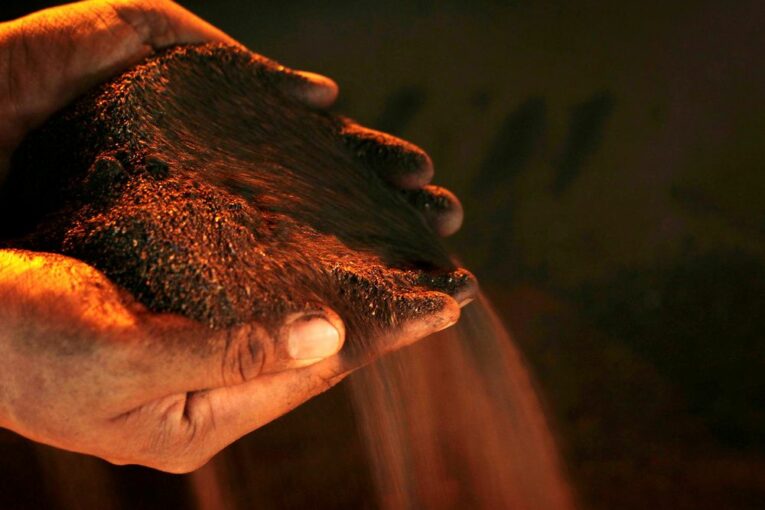
[ad_1]
Canada Nickel Co. Inc. chief executive Mark Selby called Anglo American Plc’s decision to take a minority stake in his company a “game changer” that will bolster Canada Nickel’s plans to build a rare “zero-carbon” nickel mine within two years.
London-based Anglo American’s $24-million investment in Toronto-based Canada Nickel is the latest example of a major international player making a bet on Canada emerging as a node in the supply chain for electric vehicles, at least in North America and Europe, where governments are spending billions of dollars on subsidies aimed at weakening China’s hold on the market for batteries and the things needed to make them.
Living up to climate commitments is another facet of the geopolitical strategy. Canada Nickel’s project in Northern Ontario would be powered by clean electricity from Ontario Hydro and might even absorb carbon if the company’s bet on emerging technology works.
As per the agreement, Anglo American will own about 9.9 per cent of Canada Nickel at $1.95 per share. The British miner will also have an exclusive right to purchase about 10 per cent of the nickel from Canada Nickel’s Crawford project situated within the Timmins mining camp, about 542 km northwest of Ottawa.
“This is the first major mining company investment in one of the bulk tonnage projects like Crawford,” Selby said on Feb. 9.
By bulk tonnage, Selby means the large amounts of mineral ores present in the deposit. According to Canada Nickel, Crawford is the fifth-largest nickel sulphide project in the world, with early studies suggesting the presence of about 3.5 million tonnes of nickel.
However, investors are usually skeptical of financing large nickel projects such as Crawford because of their lower grades, said Selby. In the case of Crawford, early studies suggest a grade of about 0.24 per cent nickel; a grade of two per cent or more is generally considered high grade.
“This kind of major mining attention first should really differentiate Crawford from the other projects that are out there,” said Selby. “It helps other investors get comfortable.”
While nickel is primarily used in making stainless steel, manufacturers have recently started using the metal to make NCM (nickel, cobalt, magnesium) and NCA (nickel, cobalt, aluminium) batteries.
Not all batteries have a high nickel content. However, analyst Patricia Mohr said she believes that leading automakers will depend upon nickel extracted from low-carbon mines to build their electric vehicles in the future.
The other unique aspect about the Crawford project is that it will look to absorb carbon from the air with the help of minerals such as brucite and serpentine, which are present in the mine’s tailings or waste.
A mine’s waste generally contains rocks and minerals that a miner doesn’t deem economical to mine. In this case, Canada Nickel is working on a technique to utilize the brucite and serpentine present in the deposit by making them react with the carbon emitted during operation and storing them.
It’s a strategy that’s still being tested and studied by researchers.
“In a place like Ontario where you have access to low carbon power from the grid, you can actually design not only zero-carbon operation, but we have come up with a process … we think we can end up storing nearly 20 tonnes of carbon per tonne of nickel,” said Selby.
As such, Anglo American will also have rights to any corresponding carbon credits, the permits companies buy and sell to meet pollution commitments. In return, Canada Nickel will get an opportunity to test Anglo American’s FutureSmart Mining technology program, which Selby described as a “suite of technologies” that help in recovering more nickel and also making operations greener with the use of hydrogen trucks and other facilities.
Indonesia, Philippines and Russia are the three largest producers of nickel in the world. Canada is in sixth place.
However, according to Mohr and Selby, Canada’s advantage is that it is in the process of developing a number of low-carbon nickel projects that are likely to be in high demand by automakers, unlike the nickel produced in Indonesia, which is heavily dependent on fossil fuels.
The United States last year passed the Inflation Reduction Act, which encourages automakers to source materials needed to make electric vehicles from North America and the country’s allies through tax credits. Aside from an attempt to drive away the EV supply chain from China, which dominates the sector, analysts say the move is also likely to make supply chains greener.
Selby hopes he can make the most of the opportunity.
“Over 60 per cent of the nickel supply comes from very high carbon sources in China or Chinese controlled sources in Indonesia,” he said.
“Carmakers in North America and Europe are desperate to be able to get local sources of supply and because Crawford is really one of the few new large scale sources in nickel and cobalt that can come to market in the next four or five years, they are very keen to try and work for us,” Selby added.
• Email: [email protected] | Twitter: naimonthefield
[ad_2]
You can read more of the news on source
